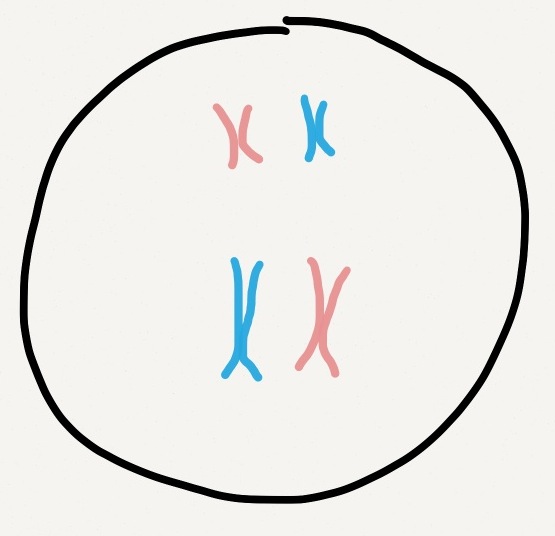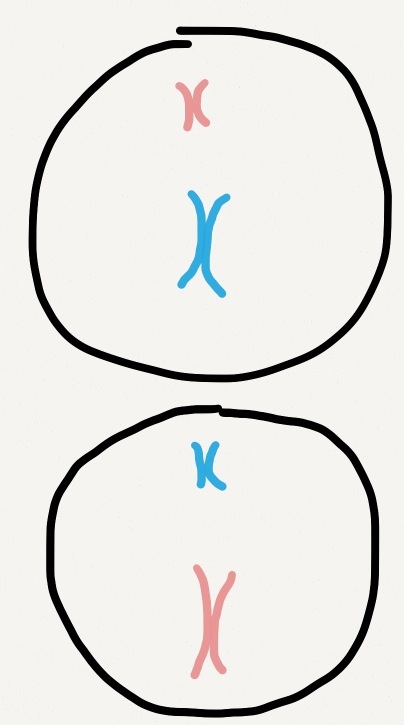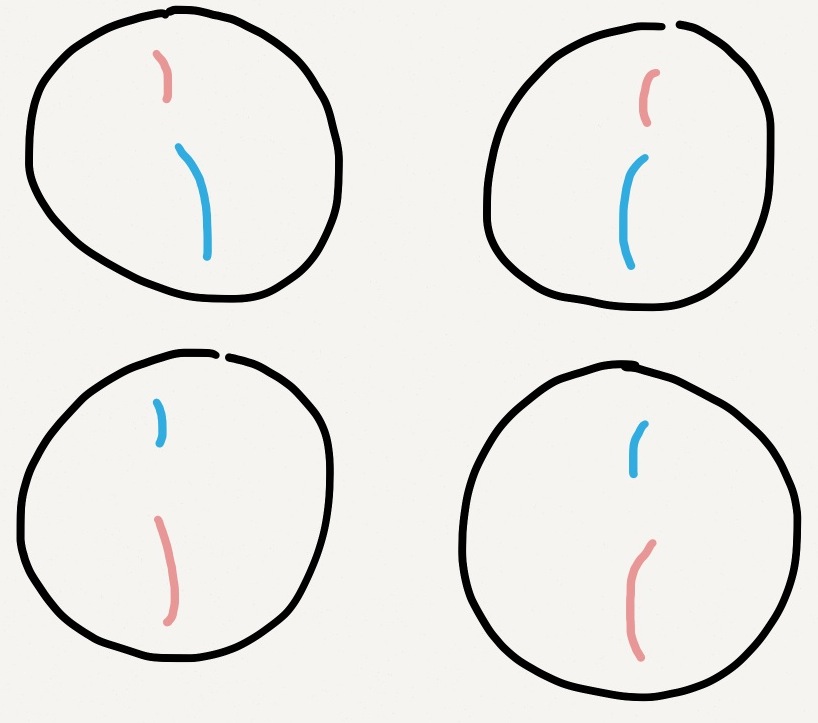Links
Objectives
- Explain the similarities and differences between meiosis and mitosis
- Describe how meiosis produces greater genetic variation
Key Points
Features of meiosis
- synapsis: homologous chr pair
- form synaptonemal complex, binds hom. chrom. together
- composed of variant of cohesin
- form synaptonemal complex, binds hom. chrom. together
- crossing over: exchange of bits of DNA btw hom. chrom.
- results in recombination, mixing of genes
- 2 rounds of division
- first separates hom. chrom.
- reduces chrom number (diploid to haploid)
- 2nd like mitosis, but no replication before it
- first separates hom. chrom.
Process
Starting with a cell that is beginning meiosis and has completed S phase:
After meiosis I, the chromosome number will be reduced from diploid to haploid, with each daughter cell receiving one of the two homologous chromosomes for each of the 2 different chromosomes in this example:
After meiosis II, the daughter cells each have a single copy of each chromosome, still having only one version of each chromosome from the previous meiotic division:
Comparison with Mitosis
- mitosis compares most directly with meiosis II in that both result in the separation of sister chromatids
- mitosis always maintains the same number of versions of chromosomes (like editions of a book)
- meiosis I reduces chromosome number by half, meiosis II separates sister chromatids
- there is no intervening interphase between meiosis I and II
In-class Activities
Questions for Practice
- Draw or describe the process of meiosis, labeling each resultant cell with its ploidy level (diploid or haploid).
- Explain two ways in which meiosis results in greater genetic variation.


